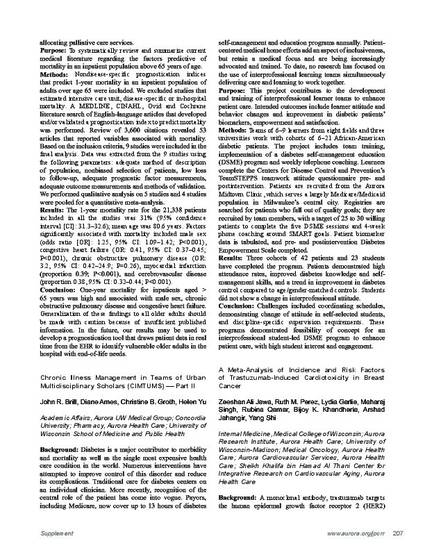
- cardiotoxicity,
- breast cancer,
- cardiac risk,
- trastuzumab
Background: A monoclonal antibody, trastuzumab targets the human epidermal growth factor receptor 2 (HER2) oncogene that is overexpressed in 25–30% of breast cancers. In combination with first-line therapy, trastuzumab resulted in significant improvement in survival outcomes for those with HER2-positive metastatic breast cancer. Due to its improvement in outcome and prolonged survival, trastuzumab has been established as standard of care in both adjuvant and metastatic settings. However, along with common adverse events, trastuzumab has been found to be associated with cardiotoxicity. An estimated 1–4% of patients treated with trastuzumab will develop heart failure and ~10% of patients will experience a reduction in left ventricular ejection fraction (LVEF). Many studies have published on the risk factors of trastuzumab-induced cardiotoxicity (TIC), with some discrepancy. Whereas one study found that of all risk factors accounted for (age, hypertension, LVEF, radiotherapy) only age was significantly associated with TIC, another found that LVEF was the sole factor, and others found that a combination of these were indicative of TIC.
Purpose: This paper aims to consolidate the data and identify potential risk factors from combined data.
Methods: A computer-based literature search using MEDLINE database was executed using the keywords trastuzumab/Herceptin, risk factors, outcomes, cardiac, cardiotoxicity, cardiomyopathy, LVEF and chemotherapy. Only prospective/retrospective human studies were included, with additional studies excluded if they reported a baseline LVEF > 68, a cohort < 50 patients, and/or results were not stratified based on cadiotoxic events.
Results: Data was collected from 17 articles, capturing 6,527 patients. A familial history of cardiac disease (odds ratio [OR]: 3.31, 95% confidence interval [CI]: 1.80–6.08; P < 0.01), diagnoses of hypertension (OR: 1.61, 95% CI: 1.14–2.26; P < 0.01), diabetes (OR: 1.62, 95% CI: 1.1–2.38; P = 0.014), and previous anthracycline use (OR: 2.14, 95% CI: 1.17–3.92; P = 0.013) were all shown to be associated with TIC. Age (P = 0.013) also was a risk factor.
Conclusion: Additional measures need to be set in place for monitoring cardiac performance in women treated with trastuzumab. Being aware of the potential risk factors along with careful attention to symptoms/LVEF can hopefully minimize the occurrence of TIC in this population.
Available at: http://works.bepress.com/arshad-jahangir/1/
